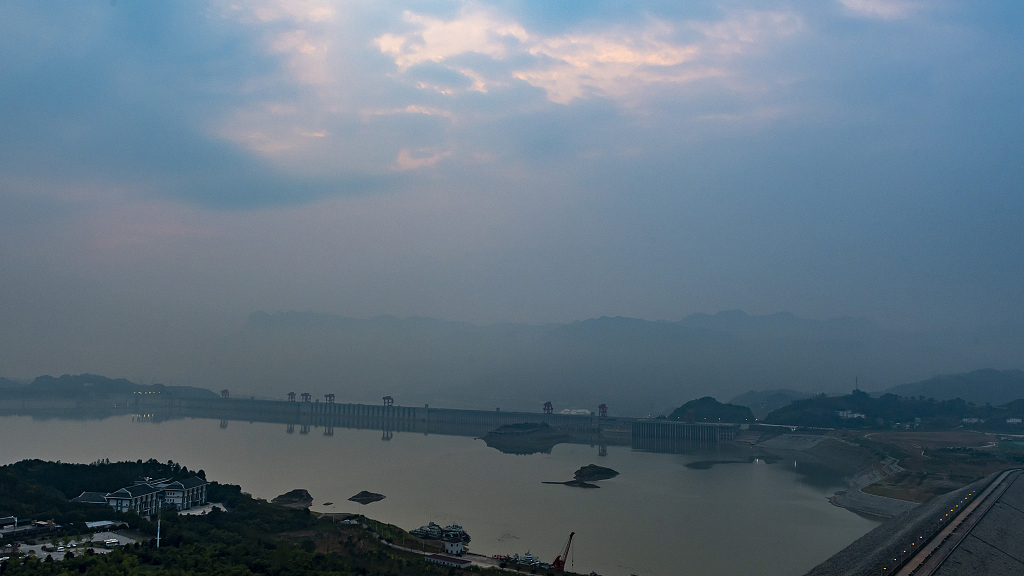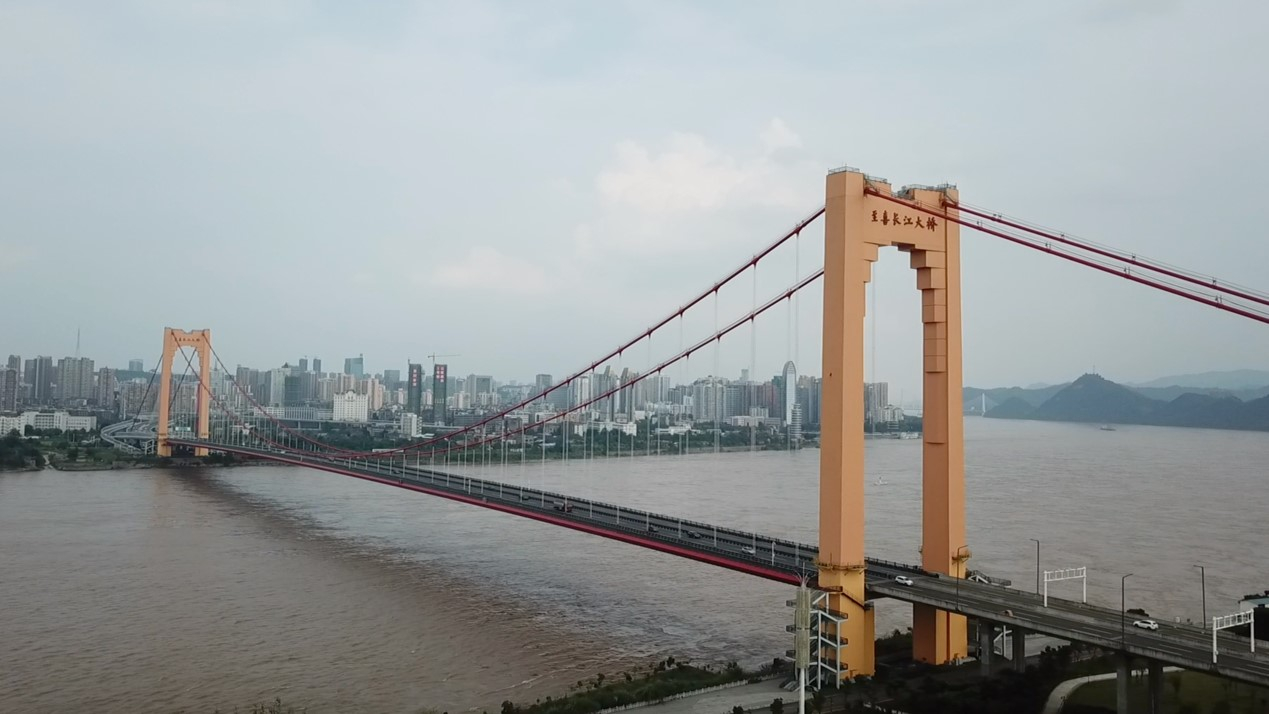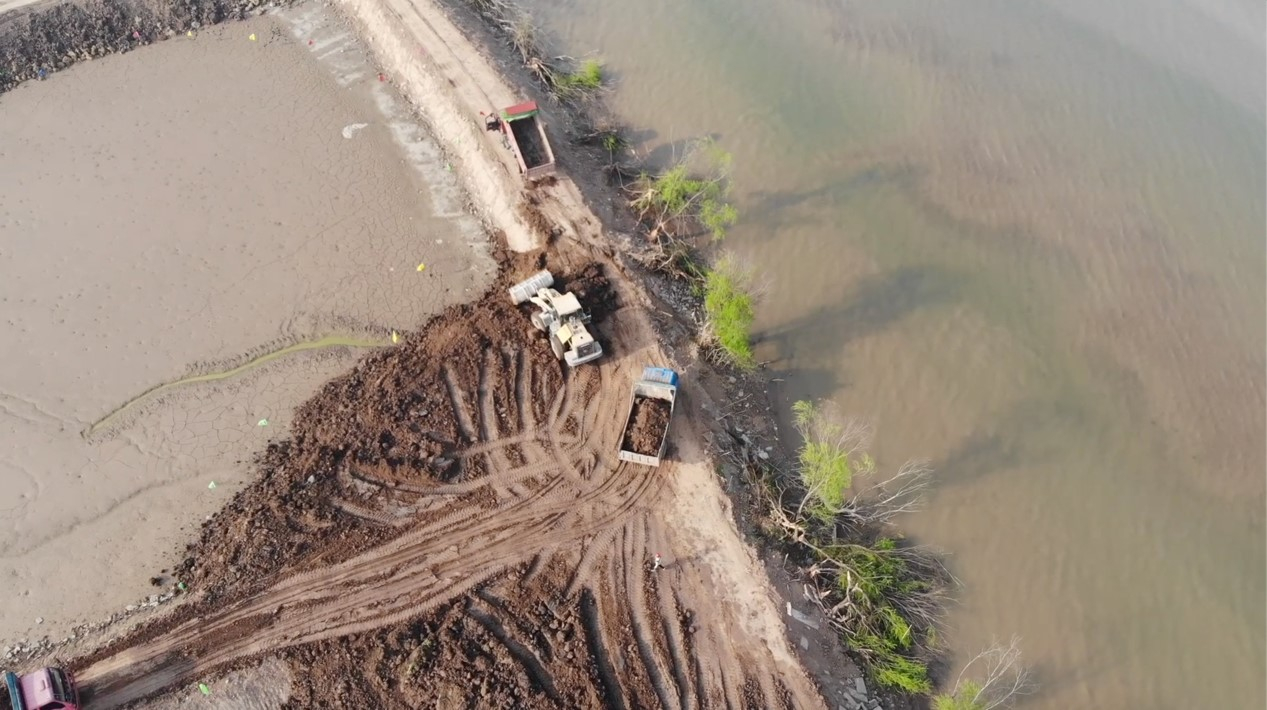

Finding a new home isn't always easy. Especially for one of the world's oldest species and one that for decades has bred along a certain stretch of China's Yangtze River – the Chinese sturgeon. The construction of the Gezhou Dam and the Three Gorges Dam threatened their natural habitat. But their numbers are not dwindling lower anymore.
Every spring, hundreds of Chinese man-bred sturgeons are released into the Yangtze River in Yichang. It helped boost the endangered species' survival rates and enhance their overall diversity.
"The wild Chinese sturgeon lives in a very diversified environment. It is a flagship species. It is an important indicator of the ecological health of the Yangtze River," said Jiang Wei from Chinese Sturgeon Research Institute.

700 man-bred Chinese sturgeon were released to the Yangtze River in Yichang, April 2019. /Photo courtesy: Yichang TV
One adult Chinese sturgeon is about four meters long and can live as long as fifty years. It is one of the world's oldest living species, existing as early as 140 million years ago.
Wild sturgeons swim upstream and spawn every November. But the construction of the Gezhou Dam, two kilometers downstream from the Three Gorges Dam, blocked the migration corridor.
Therefore, the sturgeons found a new breeding base near the Gezhou Dam. In order not to disturb the new environment, the Zhixi Yangtze River Bridge near the dam was designed without a supporting pier.

To protect the natural habitat of wild Chinese sturgeon, Zhixi Yangtze River Bridge was designed without a supporting pier. /CGTN Photo
Yichang, the central Chinese city that the Three Gorges Dam belongs to, used to suffer from pollution. It's a natural phosphorite base, an element from the fertilizer that fish eat.
Jinhu Lake used to be a contaminated fish farm, but the water system was connected to the Yangtze River. The local government shut down the fish farm five years ago and began restoring the environment.

Environmental restoration underway at Jinhu Lake Wetland Park in Yichang. /CGTN Photo
"The water quality at Jinhu Lake can affect that of the Yangtze River. That's why the ecological management project here is crucial to the Yangtze River conservation," said Zou Shiquan, a staff member of Jinhu Lake Wetland Park's administration.
Jinhu is home for many bird species now.
Zou said the process of giving back to Mother Nature still continues, as the wetland area will become a tourist hotspot with educational purposes in the near future.

Copyright © 2018 CGTN. Beijing ICP prepared NO.16065310-3
Copyright © 2018 CGTN. Beijing ICP prepared NO.16065310-3